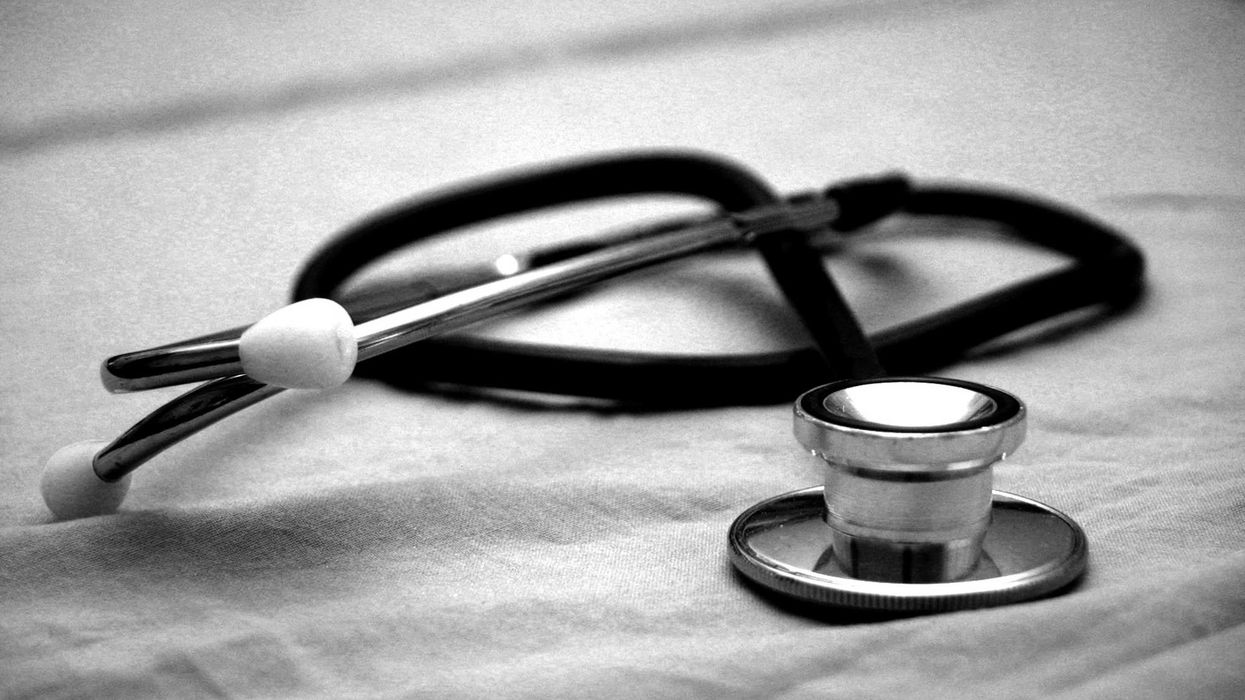More in Common recently released “ The Connection Opportunity,” an expansive two-year study involving over 6,000 Americans nationwide about connections across various divides. It has so much valuable content. As a practitioner focused on reducing problems around political differences, I want to focus on what I found to be the most important findings, followed by examples of efforts to achieve these goals.
One of the five key insights resonates most with me: “Two factors–community norms and intergroup anxiety–stand out as the strongest predictors of interest in connecting across difference.” This helps focus attention on the most important steps to take, to build community norms related to connecting, and to reduce factors leading to an overblown sense of intergroup anxiety.
To provide more context, More in Common analyzed two dozen different factors theorized to impact interest in connecting across difference. These factors covered various aspects in the categories of demographics, behavior and environment, traits and dispositions, and social and relational topics. Some factors increased interest in connecting across different, while others diminished it.
From this list of two dozen factors, two were most strongly associated with interest in connecting across differences in terms of politics (as well as when aggregating the four lines of difference studied—racial/ethnic, religious, socioeconomic, and politics). The most important factor that increased interest in this kind of connection was “perceived community norms.” On the other hand, “intergroup anxiety” was the most important factor that decreased interest in connection across difference, and intergroup anxiety was particularly important for politics.
To its credit, More in Common turned these descriptive findings into action. Two of its seven recommendations directly relate to these findings:
- “Increase the perception that connecting across difference is the 'community norm.”’
- “Reduce intergroup anxiety.”
More in Common explained these recommendations in ways that closely align with the goals of my organization, More Like US.
Numerous other organizations are also trying to achieve these goals in their own ways, and I try to identify many of them here. More in Common also identified numerous organizations conducting aligned activities in the “Resources for Stakeholders” section of The Connection Opportunity. I have specifically chosen to highlight additional organizations and efforts here.
Let’s start with the recommendation to “increase the perception that connecting across difference is the “community norm.”’ More in Common identified factors impacting community norms including “the media, one’s immediate social and physical environments, and institutional policy.” More in Common went on to praise “efforts to uplift stories of connection, model social connection, and support policies that signal communities are welcoming.”
Most directly in terms of building the “community norm,” we at More Like US are starting to work on college campuses to build community norms around engaging across the political spectrum, focusing on the messaging and information students see about each other about the acceptability of discussing political topics. We are ultimately trying to reach the majority of students on a given campus. Most directly in terms of building the “community norm,” we at More Like US are working with the National Social Norms Center at Michigan State, which has decades of experience building community norms on college campuses, mostly to change health-related behaviors. It now also seeks to change social norms related to politics and political conversations.
Groups like BridgeUSA have started to build new community norms on college campuses, mostly through dialogue. Many college campuses have their own efforts in this space. Other organizations, such as Braver Angels (specifically its >100 alliances), and The Harwood Institute, target a wider age range and aim to build new community norms in specific communities or parts of communities.
We also offer resources for media, both news and entertainment. More Like US’s Similarity Hub, built with AllSides, aggregates hundreds of survey datapoints showing common ground across the political spectrum, useful for journalists who can show that perspectives can overlap even on the most hot-button topics. Trusting News is an organization working to reduce the contribution of news to political tensions.
More Like US’s CAST (Complex, Admirable, Similar, Together) guidance for those in the Arts is designed to identify ways to portray those across the political spectrum in a better and more accurate light. The “Together” aspect aims to uplift and model stories of connection that More in Common identified as important in building community norms. Organizations such as Bridge Entertainment Labs have this aim for TV and film, and the Better Together Film Festival, starting April 21, will showcase a half-dozen films in this space. Efforts such as Jesters & Fools and the Great American Punchline Tour have focused on comedy, showing other attempts to engage the Arts.
Regarding the other recommendation to “reduce intergroup anxiety,” More in Common identified two main approaches: correcting misperceptions (especially that Americans are less interested to connect across difference than in reality), and increasing Americans’ confidence to engage across differences (often by building skills to communicate and work together).
More Like US’s mission is correcting misperceptions, including correct misperceptions about political conversations. Our Perception Gap lesson plan/presentation covers many political misperceptions, including two misperceptions about conversation. (To its credit, More in Common coined the term Perception Gap.) One is a finding that Americans say they are interested in learning about the beliefs of those they disagree with, but incorrectly think that those who disagree with them are not as interested to learn about them. (In other words, a Democrat may say they are interested to learn about Republicans, but also think that Republicans are not as interested to learn about Democrats.) Another comes from another recent More in Common survey, showing that Republicans and Democrats think those in the other party are much more willing to believe it is acceptable to act with hostility during political conversations than in reality.
More Like US is fairly unique in this direct correction of misperceptions of each other in US politics. This said, organizations such as Beyond Conflict have developed approaches that correct misperceptions, including an intervention that was a top performer in the Strengthening Democracy Challenge led by Stanford. Beyond Conflict just released a valuable report about understanding and using meta-perception correction interventions. (Problematic meta-perceptions refer to second-order misperceptions, which Beyond Conflict defines in the report as “false beliefs about what individuals think others think about them and people like them.”)
We have also explored ways to build skills to communicate across politics at scale, and to increase confidence to engage across difference. We have a mnemonic to be SVL (pronounced something like “civil”), involving telling Stories, relating to a conversation partners’ Values, and Listening closely. This is based on guidance from Stanford Sociology professor Robb Willer.
Numerous other groups recognize that not all Americans have the time, interest, energy, confidence, etc., to attend a conversation workshop, and some have developed their mnemonics to try to convey the most important conversation tips at scale. A complimentary mnemonic to SVL (that also sounds very similar) is CIV (as in CIVil), based on guidance from John Sarrouf, co-Executive Director at Essential Partners, put together by UNC Psychology professor Kurt Gray in his recent book Outraged. While there are various details of CIV, it stands for Connect (often on non- or less-political topics), Invite (generally exploring whether to broach more difficult subjects like politics), and Validate (making a conversation partner feel appreciated). CIV primarily provides context for starting a conversation and making a conversation partner feel validated. At the same time, SVL gives more guidance about how to converse so they can work well together.
While I will not cover them in much depth here, The Connection Opportunity report has numerous other relevant and insightful findings. These include the insight that Americans have much greater interest in having discussions that work toward a mutual goal instead of conversations about group tensions, and a sobering reminder that “Americans are most apprehensive about connecting across political differences (compared to other areas of difference).” Clearly, a lot of work remains to be done, especially on the political front.
More in Common’s The Connection Opportunity provides some of the best research into what encourages Americans to connect across politics, among other lines of difference, and what holds Americans back. It also provides useful guidance about how to increase connection.
I have focused on two of the recommendations in the report to increase perceptions that connecting across difference is the “community norm,” and to reduce intergroup anxiety. More Like US and many other organizations are already doing a substantial amount to advance these recommendations. Yet there is so much opportunity for other work in these areas. Hopefully, The Connection Opportunity inspires other organizations and institutions to focus additional efforts on achieving these goals at scale.
** The names of the organizations More in Common and More Like US are similar, though there is no formal relationship. A simple distinction is that More in Common primarily does underlying research, often in publications or Substack posts, while More Like US does much more outreach with this kind of research. Yet More in Common does some outreach, especially in terms of getting journalists and columnists to write about research, and we at More Like US do some research in terms of having academic partners test the effectiveness of our outreach approaches.
James Coan is the co-founder and executive director of More Like US. Coan can be contacted at James@morelikeus.org



















